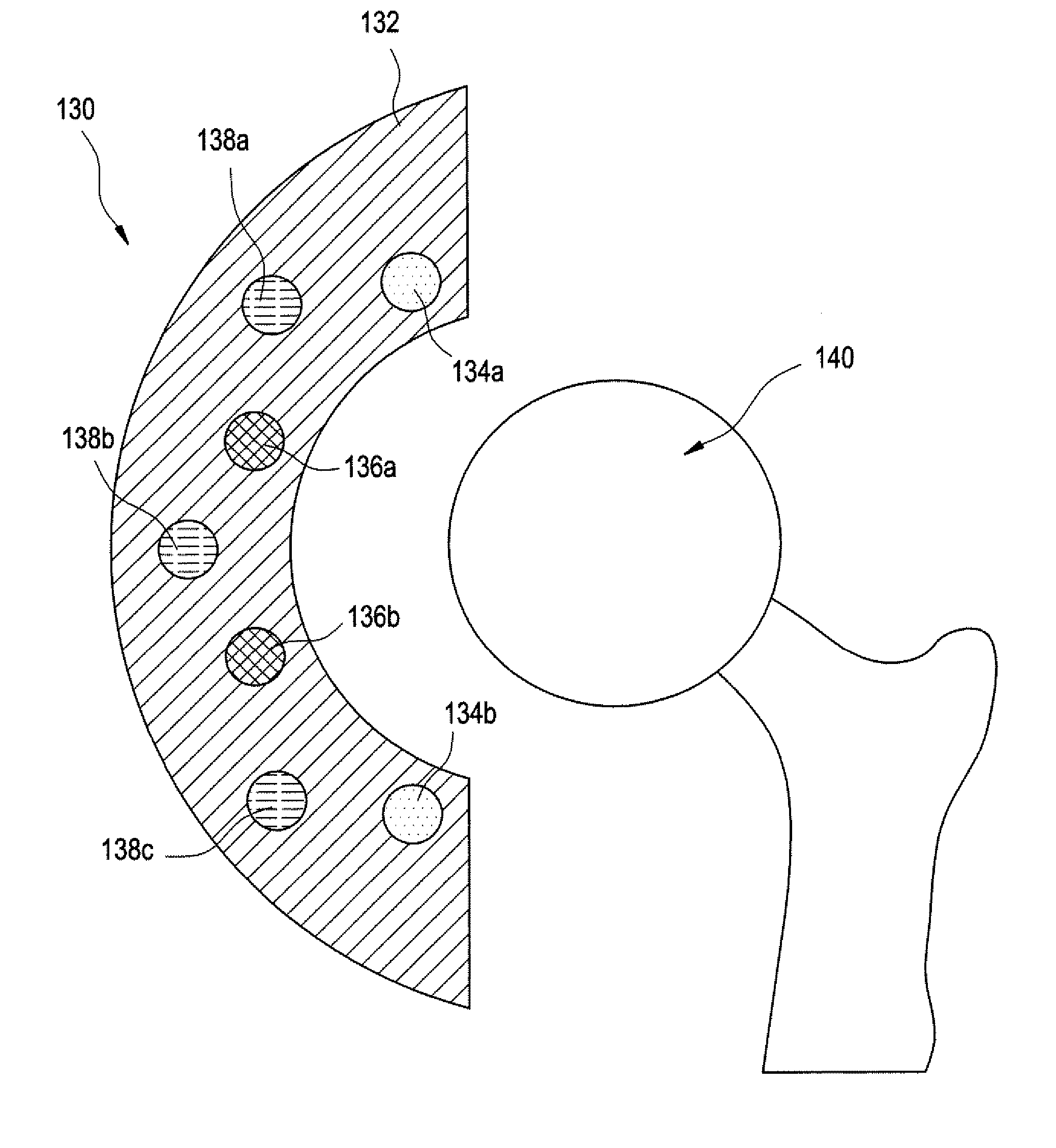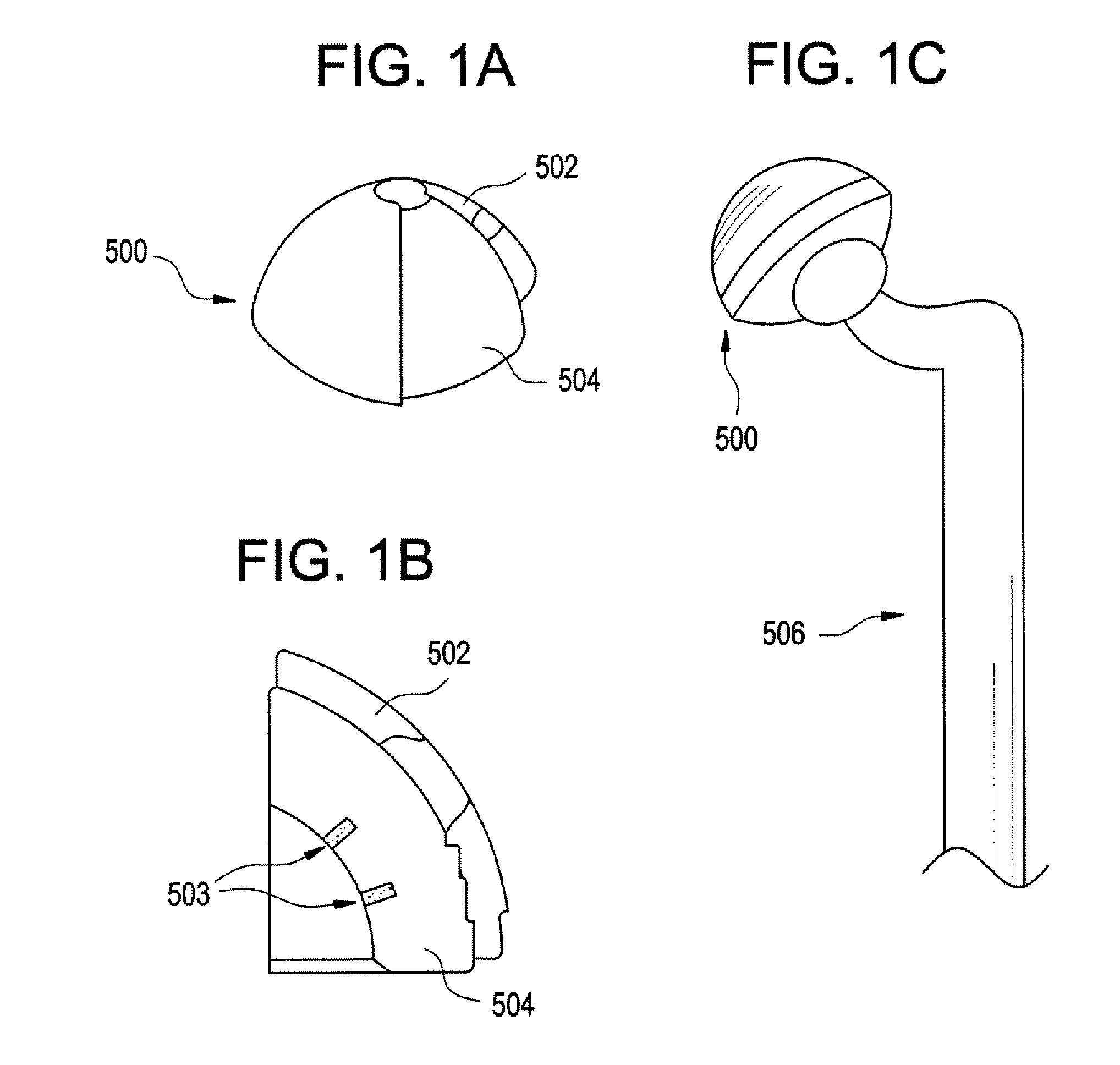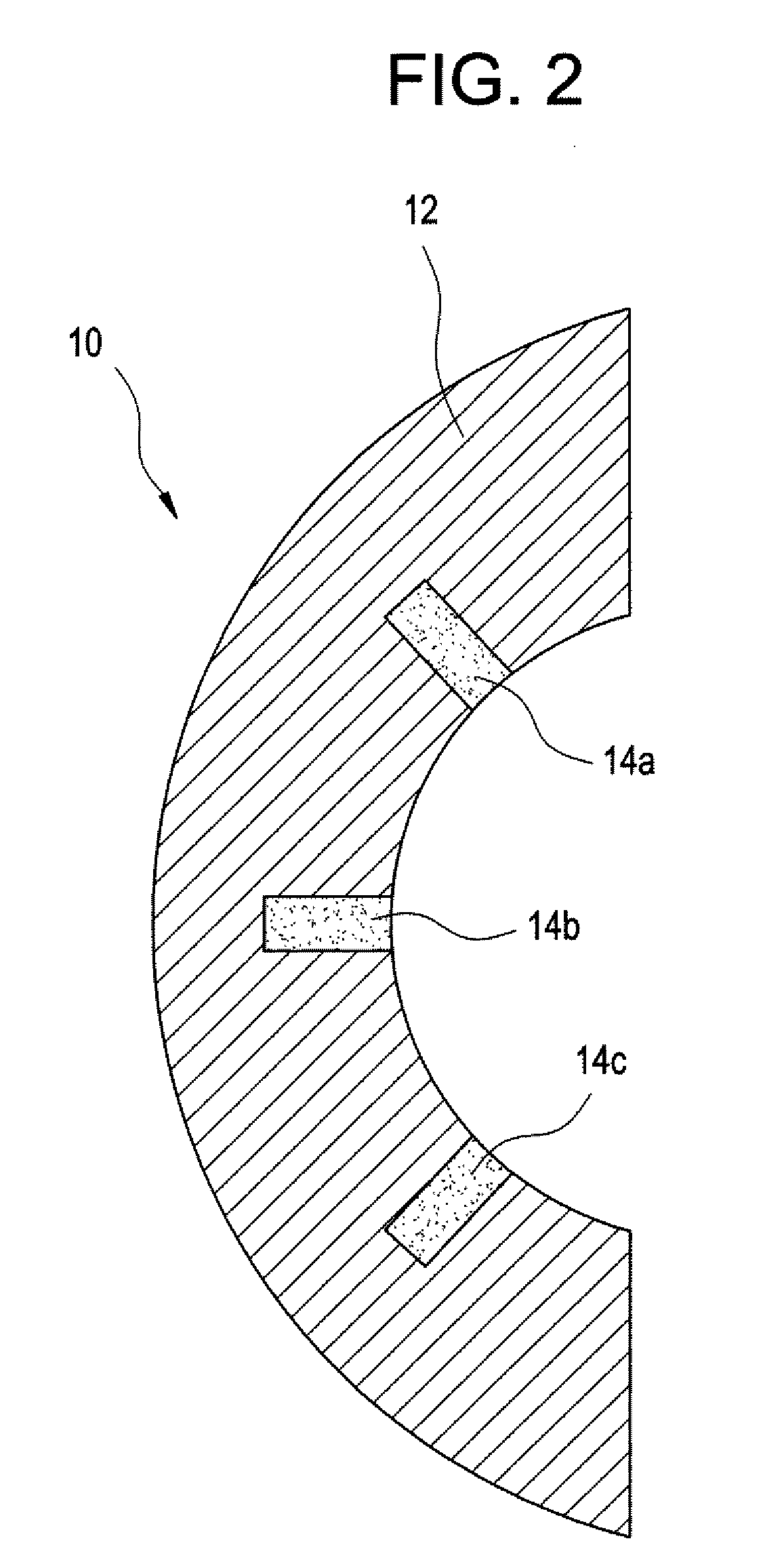Passive wear-indicating sensor for implantable prosthetic device
a prosthetic device and wear-indicating sensor technology, applied in the direction of prosthesis, shoulder joints, applications, etc., can solve the problems of poor engine performance, affecting the performance of the device, damage to the contact surface, etc., and achieve the effect of improving the detection of wear indicating
- Summary
- Abstract
- Description
- Claims
- Application Information
AI Technical Summary
Benefits of technology
Problems solved by technology
Method used
Image
Examples
Embodiment Construction
[0045] Methods and devices have been developed that utilize an abrasion mechanism for the non-invasive detection of medical implant device wear and / or for drug delivery to a joint space. In addition, the methods and devices can be adapted for the detection of device wear or the release of chemicals in non-medical applications, such as the detection of wear or release of molecules in automotive, watercraft, or aircraft parts. The released particles can be a wear indicating material (e.g., a diagnostic agent) or can be a therapeutic or prophylactic agent (e.g., an active pharmaceutical agent or API formulation).
[0046] Advantageously, this wear sensor can be “passive,” in the sense that the means for indicating wear requires no electrical or electromechanical component as part of the implant device itself. Release of the indicator material is triggered without electrical power. This beneficially can reduce the cost and complexity of the device, yet can enable the physician to non-inva...
PUM
| Property | Measurement | Unit |
|---|---|---|
| volume | aaaaa | aaaaa |
| volume | aaaaa | aaaaa |
| volume | aaaaa | aaaaa |
Abstract
Description
Claims
Application Information
 Login to View More
Login to View More - R&D
- Intellectual Property
- Life Sciences
- Materials
- Tech Scout
- Unparalleled Data Quality
- Higher Quality Content
- 60% Fewer Hallucinations
Browse by: Latest US Patents, China's latest patents, Technical Efficacy Thesaurus, Application Domain, Technology Topic, Popular Technical Reports.
© 2025 PatSnap. All rights reserved.Legal|Privacy policy|Modern Slavery Act Transparency Statement|Sitemap|About US| Contact US: help@patsnap.com



